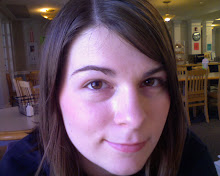
Title: Cycle II
Size: 8"x10"
Medium: Soft ground etching on grey paper
Edition of 5
This is definitely my favorite of the Cycle series and I plan on printing one or two more editions on different types of paper and using different ink. Obviously, I was heavily influenced by Ernst Haeckel in the design of this image. However, rather than Haeckel's typical sea-creature and radiolaria imagery, I chose to create a composition out of male and female reproductive organs. Yes, the male organs are there! But they're a bit more difficult to spot than the female bits.
Initially my intention was simply to create a beautiful composition using hidden parts of our anatomy (parts that have an obvious connection to cycles, especially for women). However, as I continued to work on the plate, the imagery took on various meanings. I think it's interesting how the female organs are so prominent and central, with the male organs almost hidden--quite the opposite of how the male/female "duality" is usually perceived. I like that the "duality" is not as present here and that the two are intertwined (as, many would argue, they are in reality). Aside from the uterus and ovaries it is difficult to determine which organs belong to either sex. I chose to emulate Haeckel's compositions because of the fine balance and attention to detail--a beautiful synthesis of scientific and artistic vision. I wanted to display both the aesthetic and biological beauty of these aspects of ourselves.
This plate was created using soft ground, which I had a lot of fun working with. The ground is applied by heating the copper plate and applying a few small dabs (at room temp, it is a thick, wax-like consistency). A roller is then used to distribute the ground in a very thin, even layer across the entire surface of the plate. I did this process three times to create the various layers of the plate (perhaps I will post in-progress images if I scan the proofs).
The first layer was the basic shapes of the organs, with a little bit of detail (drawn through tracing paper directly on the surface of the plate). The plate was then put in a chemical bath so the lines would be etched into the plate. The next layer involved a combination of both hard and soft ground. Soft ground was applied first, then I carefully painted in hard ground to cover the parts where I did not want the texture. I placed a piece of fabric over the entire plate, ran it through the press, and put it in a chemical bath so the texture would be etched into the entire plate except where there was hard ground. The last layer was soft ground again, with the details and darker tones; again, this was drawn on tracing paper with a pencil. The pressure from the pencil through the tracing paper was enough to create a line in the soft ground. One final chemical bath and viola!
I also printed a limited number of these in a purple-toned ink on grey paper, however, I think I prefer this one the most. Nonetheless, I look forward to experimenting with different inks and papers with this plate.

